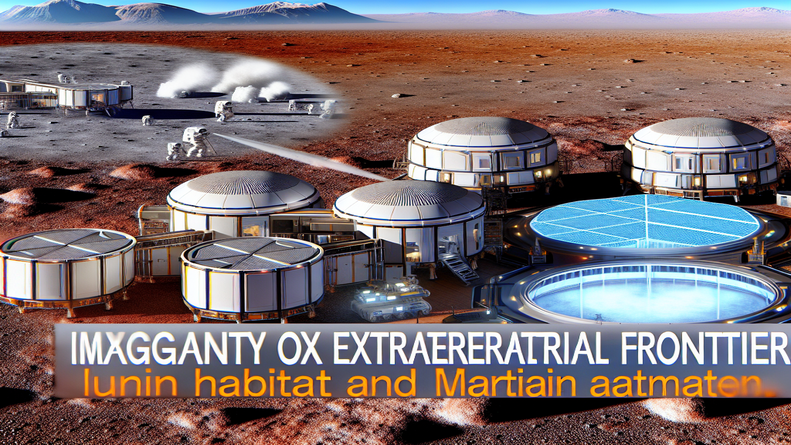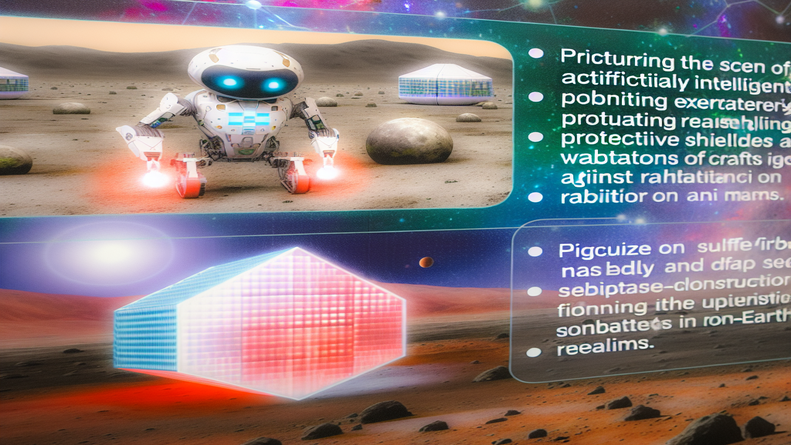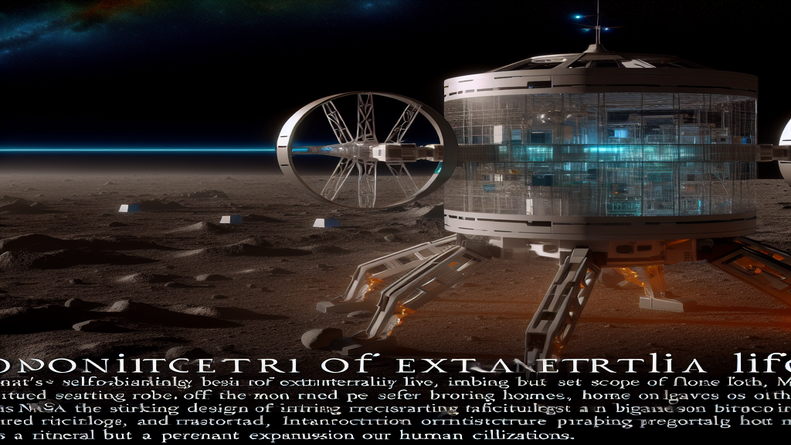Imagine living in a world where the concept of ‘home’ transcends beyond our planet Earth; a world where living on the Moon or Mars is not just a figment of sci-fi fantasies but a tangible reality. As pioneers prepare to press the boundaries of human colonization into the solar system, housing remains a formidable challenge. However, NASA, the beacon of space innovation, has once again lit the path by unveiling a self-assembling robotic structure aimed to lay the groundwork for off-planet habitation. Let’s embark on an exhilarating journey through this revolutionary development, promising an abode among the stars.
The Challenges of Lunar and Martian Settlements
The prospect of colonizing celestial bodies is filled with excitement, but the practicalities are a formidable Goliath to tackle. The harsh and barren landscapes of the Moon and Mars present a unique set of challenges for human habitation. Radiation, extreme temperatures, and the absence of breathable atmosphere are just the tip of the iceberg. Prospective settlers must consider how to transport materials across the astral void or utilize what’s available in situ for construction. Building a safe and sustainable environment in these conditions is what sets the stage for the necessity of ingenious solutions like those NASA is pioneering.
Revolutionizing Construction: Robots at the Helm
Once upon a desolate lunar surface, NASA engineers envisage robots and drones working in harmony to construct the first-ever extraterrestrial neighborhoods. This isn’t a distant dream, but an impending reality as we inch closer to the era of space colonization. These self-assembling robots, acting as celestial architects, could transform how we approach construction on Earth’s satellite and beyond. Using autonomous robotics for building purposes circumvents many risks associated with human labor in space, while also enhancing efficiency and precision.
A Foundation Built on Innovation and Resilience
 The self-assembling robotic technology signifies a robust foundation for space habitation, resilient against the rigors of extraterrestrial environments. Each robotic unit, powered by cutting-edge AI algorithms, adapts and responds to the unpredictable nuances of building on alien terrain. From laying the initial bricks to sealing the shields that ward off cosmic radiation, these robots personify the resilience required to carve out human spaces in non-Earthly realms.
The self-assembling robotic technology signifies a robust foundation for space habitation, resilient against the rigors of extraterrestrial environments. Each robotic unit, powered by cutting-edge AI algorithms, adapts and responds to the unpredictable nuances of building on alien terrain. From laying the initial bricks to sealing the shields that ward off cosmic radiation, these robots personify the resilience required to carve out human spaces in non-Earthly realms.
A Quantum Leap for Off-World Urbanization
With the advent of intelligent constructs like NASA’s self-assembling robots, we are poised at the cusp of a new age in urbanization – one that transcends our planetary confines. The scope of this technology extends beyond erecting habitats; it can pave the way for establishing intricate infrastructure, from research facilities to transportation networks. This marks not just a transient visit to another world, but a permanent expansion of human civilization into the cosmos.
Lessons from the Stars: Synergizing Human Ingenuity and Robotic Precision
The leap into off-world colonization brings invaluable lessons back to Earth. The merger of human creativity with robotic precision in off-Earth construction can teach us new ways to approach sustainability and efficiency in our terrestrial projects. It prompts the question: If we can build on the Moon and Mars, what limits us on Earth?
Conclusion
To conclude, NASA’s demonstration of a self-assembling robotic structure is the drumbeat to a march toward new worlds. As we step into an era where the Moon and Mars beckon with open arms, these autonomous builders herald a shift in the paradigm of human existence. They do not just construct shelters; they lay down the groundwork for an extraterrestrial future, rich with the prosperity of knowledge and human spirit. With resilience, grit, and visionary thinking, our off-planet abodes will not just be structures of survival, but homes that resonate with the heartbeat of human ingenuity. Are you ready to join the movement and redefine the scope of what’s possible within your organization? Connect with me on [LinkedIn] to explore how you can harness the power of NASA’s pioneering technologies and embark on a journey of unparalleled productivity and interstellar possibilities. 🚀🌟
